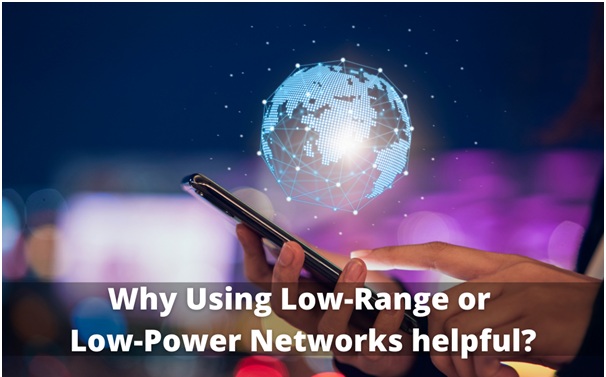With the availability of several IoT connectivity solutions, it is difficult to determine the one that suits your business. LoRaWAN is a LoRa platform utilized in LPWAN supporting IoT. If you are not already aware, LoRa implies a low-range, low-power wireless platform. LPWAN implies a low-power wide-range network. It is a kind of wireless telecommunication wide area network. LPWAN is designed to enable long-range communications at a low bit rate amongst other connected objects such as sensors operated on a battery.
On the other hand, LoRaWAN, as a competitive IoT connectivity solution, has entered the industry. It has a global usage, but the technology has not reached its peak yet. The demand in the Brazilian market is, however, increasing at a faster pace. A shared telecom infrastructure company, American Tower, rolled out LoRaWAN in support of IoT and currently covers several metro areas in Brazil.
LoRa offers excellent coverage for IoT use cases at the lowest costs where speed and latency are not dealbreakers. For IoT use cases that utilize long-range connectivity for low power consumption, LoRaWAN is an ideal option. This technology is being used by private, public, or hybrid networks, making it a great option while supporting data transmission in a secured manner.
Benefits of LoRaWAN
If cellular or Wi-Fi connectivity is not a reliable option, then which IoT connectivity solution works best? Irrespective of whether it is costly or not, leveraging cellular or Wi-Fi coverage is an issue. Devices need to be consistently powered by connectivity at an affordable cost.
Besides, with its high speed and low latency, the 5G benefits do not meet the requirements of battery-operated devices deployed in its entire lifecycle. Greater network access and data speed can put a heavy strain on low-power devices and have a high cost of data transmission.
LoRa offers greater coverage at a reduced cost for IoT use cases where latency and speed are not dealbreakers. The use cases that fit LoRaWAN the best involve indoor or rural settings. The narrow LoRaWAN band offers a broader range. Its ability to penetrate through obstacles for full coverage makes this a lucrative IoT connectivity solution.
The Use Cases for LoRaWAN
The benefits of LoRaWAN are obvious – wide range, cost-effective, and low power for devices that require no high data transmission rates.
A few of the use cases include:
Agriculture: With an extended range that provides reliability in rural applications for devices with a considerable data transmission rate, LoRaWAN absolutely supports agricultural use cases.
Assets and logistics: Network-based location and tracking capabilities at a low cost and optimized battery life make LoRaWAN fitting for assets and logistics.
Smart metering: LoRaWAN’s ability to reach sensors monitoring utilities located underground makes this an ideal connectivity choice for smart metering.
Smart home: The ability to pass through an obstacle, such as walls, and the strength to support battery-powered, low data-consuming applications that can be used in smart homes make this connectivity option quite endearing.
Advantages of LoRaWAN
- Operates on free frequencies, without any upfront licensing cost to use the technology
- The single LoRa Gateway device is designed to take care of thousands of end devices or nodes.
- Low-Powered sensors and wide coverage area are estimated in kilometers.
- Easy to deploy because of its simple architecture.
- Low power implies long battery life for devices. Sensor batteries last anywhere between 2–5 years.
- It is used widely for M2M/IoT applications.
- The long-range enables solutions such as smart city applications.
- No restriction in the maximum number of daily messages (compared to SigFox limitation of 140/day)
- LoRaWAN benefits from being an alliance with an Open approach instead of a proprietary one.
- Better payload size.
- Low bandwidth makes it suitable for practical IoT deployments with less data and/or data transmissions that are not constant.
- Low connectivity costs.
- Easy to set up, wireless, and fast deployment.
- Has a layer of security for the network.
- Bi-directional communication.
- It is backed by CISCO, IBM, and 500 companies that are members of the LoRa Alliance.
- Open Frequency
Disadvantages of LoRaWAN
- LoRaWAN is not for large data payloads. The payload is limited only to 100 bytes.
- It is not meant for continuous monitoring.
- It is not ideal for real-time applications that require lower latency.
- The proliferation of LPWAN technologies, and LoRaWAN, poses the challenge of co-existence as the deployment of gateways populate urban areas.
- The drawback of open frequency is that there may be interference with that frequency and a low data rate. LoRa operates on open frequencies. The open frequencies differ based on countries.
LoRa is A Long-Term Choice
As 2G and 3G networks shut down and 5G rolls out to become a global option in the next 10 years, choosing an IoT connectivity solution may seem concerning amidst a flurry of choices. Even as 4G LTE becomes the cellular choice for IoT devices, LoRaWAN provides more direct connectivity for wide-range, low-power IoT applications.
